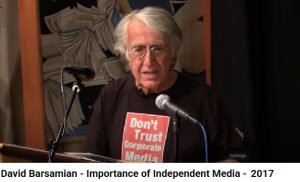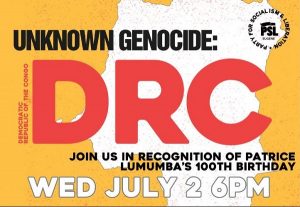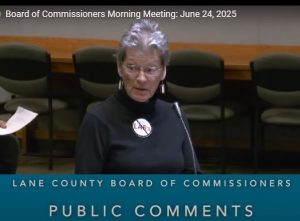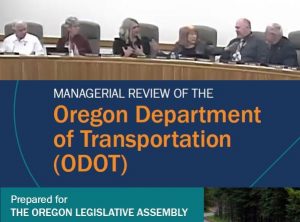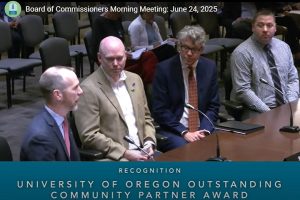City honors neighborhood feedback, asks to hear from developers by Nov. 28
8 min read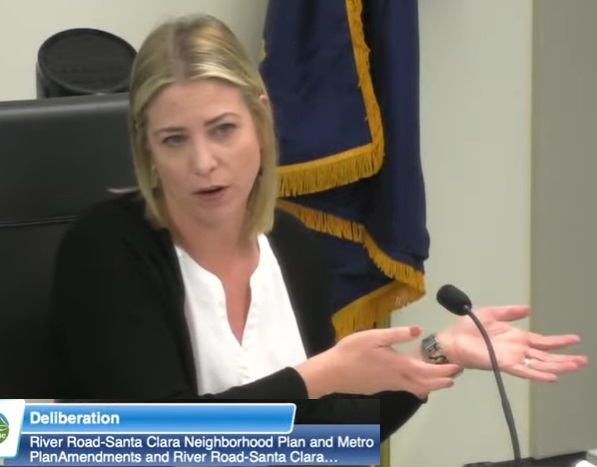
Eugene’s Planning Commission honored feedback from the neighborhoods, asking city staff at its Nov. 14 meeting to update its package for River Road and Santa Clara:
- River Avenue will be ‘carved out’ and recognized as its own unique area, after long-standing businesses expressed concern.
- Instead of being repealed, the 1987 plan will be preserved alongside the new neighborhood plan, because it provides more detail.
- And the record will be kept open until 9 p.m. Nov. 28, to seek public comment on these changes and to reach out to developers.
The planning commission hopes to learn: Can height or other incentives help create more ground-floor commercial space?
[00:00:42] Commissioner Lisa Fragala: Could we build in incentives to the code where we would allow additional height if we incentivized commercial development on the ground floor? Because we did hear from the community, from stakeholders, that they’re concerned that they want to see more commercial development for neighborhood use, and they’re concerned that that’s not going to happen. (Yeah.) And we talked about not wanting to prescribe it, but maybe we could incentivize it.
[00:01:18] Commissioner Jason Lear: I think that’s a really brilliant idea as well. I’d also support the idea of getting more additional building space, and just what’s taken up by the commercial, with the idea of being in a housing shortage, you know, that took decades of very well-meaning decisions about preserving the community and then all of a sudden, we kind of realize, ‘Well, oh, my gosh, you know, housing prices have doubled in three years. And we’re the most housing-burdened community, basically, in the entire country.’
[00:01:50] And just with the idea that Commissioner (Ken) Beeson brought up that actually creating the ability to then build even a little bit more housing than you might have been able to in the original, as opposed to just kind of swapping it out for commercial. So I think that’s a really good compromise idea as well.
[00:02:04] John Q: The neighborhood would prefer a more walking-friendly limit of 60-foot heights. But to pencil out ground-floor commercial, would developers need to go higher?
[00:02:14] Lauren Sommers (assistant city attorney): Perhaps commission could ask for community input if there are developers in the community that want to say, you know, ‘What would be really helpful in that situation is this.’ And also for staff to do some looking (in the time that you have) to see if there is something that rises to the top in terms of what at least feels to staff like a workable incentive for that kind of development …
[00:02:40] It’s staff’s recommendation that Planning Commission in this instance, do reopen the record until 9:00 p.m. on Nov. 28 to give folks some more time to talk to you about their feelings about some of these new options.
[00:02:56] Commissioner Dan Isaacson: This is more of a statement for the general public than us. I mean, we get a lot of conversation about whether or not we’re in public engaging them and this is the opportunity to do so. So this is the call, that if you have folks who are in the development world, this is the time to weigh in on what moves the needle.
[00:03:12] I would hate to pass this on to the city council and then tune in for their public hearing and have a call go out and say, ‘We had no idea this is going on.’ This is democracy in action. So if you feel that you have some input, then input.
[00:03:25] John Q: The planning commission also chose to preserve the 1987 plan.
[00:03:30] Lauren Sommers (assistant city attorney): I think what you’ve heard in testimony is that there are folks that feel that the neighborhood plan diagram, the 1987 plan diagram and the sub-area diagrams provide a little bit more specificity than the general Metro Plan diagram. And so until the time that a parcel-specific diagram is adopted, they would prefer to keep the 1987 plan in place to take advantage of whatever extra specificity might live in that plan. It’s not parcel-specific either, but it is a little bit different scale. (Yeah.)
[00:04:07] John Q: Staff was asked if it would be possible to keep the 1987 plan and also adopt the new neighborhood plan.
[00:04:16] Terri Harding (principal planner, community planning and design): The conclusion that we came to as a small staff team was that that’s a viable option. We could do that. We could keep both plans in place. We will have another decision to make in 2026 when we have the citywide parcel-specific diagram. We will need to decide what to do with all of the refinement plans, so that day will come, but for now that the staff feels and from the testimony that we received, we feel this would be a workable option for those parties. Again, record is open.
[00:04:49] John Q: Two commissioners spoke on behalf of the neighborhood volunteers.
[00:04:54] Commissioner Lisa Fragala: When I first joined the planning commission, I was the liaison to the River Road, Santa Clara neighborhood plan, five years ago, six years ago… Even in the short time that I was the liaison, it was quite breathtaking, the level of community engagement that happened around this plan.
[00:05:16] I mean, we’re talking about events at North Eugene High School that were hundreds of people. Or draft code work that 40-50-60 people would show up for. This was a very engaged community process.
[00:05:31] In our memorandum, we hear thousands of hours of work. I think hundreds of thousands of hours of volunteer work went into the vision for this community. So these people are presenting a neighborhood plan for a vision for the type of community that they are hoping to see evolve and much of what they’re presenting is in alignment with many of the other values that are represented in the metro plan and that are represented in CFEC—in Climate Friendly Equitable Communities.
[00:06:06] And so I’m hoping that as the planning commission thinks about this process, they can think about the type of community that people who live there are thinking about, and they want walkable communities with services that meet the needs of the people living there.
[00:06:28] Commissioner Diane Behling: I go back to this last batch of testimony, which included a letter from the co-chairs of the River Road neighborhood, requesting keeping the 1987 plan.
[00:06:42] And these are the people who did all the work. These are the people who spent the years and hours, and I believe their thinking is valid. And if we can keep both plans in place with no detriment, then I’m in favor of that.
[00:07:03] Commissioner Tiffany Edwards: I’m going to ask the commissioners who are in favor of keeping both plans to signal with hand raising. (Unanimous.) Unanimous. There we go.
[00:07:14] John Q: The original package prohibited new businesses considered car-centric, such as storage units, boat sales, and equipment rental.
[00:07:23] Terri Harding: One of the topics that generated a lot of testimony was the proposal to prohibit in the future this list of uses. The code amendment would prohibit establishing new uses on this list or expanding existing uses.
[00:07:39] It is important to note that existing uses, like if there’s a motorcycle sales shop on River Road already, they can stay—even if you adopted this code amendment or recommended it, they can stay, they can even sell the business and somebody else could operate it. They can continue to operate, but they would not be allowed to expand.
[00:07:59] Okay. A little bit of background. This came out of the draft special area zone, which was based on the corridor study, workshops and outreach process, discussions with the community groups involved.
[00:08:13] And just one other note, that prohibited uses are included in other special area zones in the city of Eugene. This is not unique, including the Downtown Riverfront and Walnut Special Area Zones. And the goal in those areas, similar to the goal of this proposal, to transform the corridor over time to a more neighborhood scale, thriving mixed-use corridor with a walkable district served by frequent transit, biking and walking,
[00:08:39] But we heard from some folks, particularly on River Avenue, that this would have a big impact on their business, keep them from expanding, and cause problems in that area. And so staff’s proposed solution to that—there are others, but this is the one that we came up with for you all to discuss—is to effectively carve out an area from the code amendments that would create these new prohibited uses and it’s on River Avenue between River Avenue and Beltline…
[00:09:14] Staff feels that this is consistent with the overall direction that the project has taken, discussing walkable mixed-use corridor with neighborhood- serving retail can still be accomplished without including this area, which has a pretty different commercial-industrial feel and is located off the corridor. So that is a description of the carve-out option.
[00:09:42] Commissioner Tiffany Edwards: We heard from the folks on River Avenue, but who else hasn’t been paying attention, hasn’t been part of the process that we may be overlooking? Even if we did decide to kind of slightly change course and carve out River Avenue or something: Do we know?
[00:10:01] Terri Harding: We don’t have a comprehensive business inventory at the city of Eugene, but we attempted to provide multiple opportunities through mailers, walking the business corridor area at least twice through the course of the work, and general opportunities, once there was a code amendment proposed, to learn more about that opportunity.
[00:10:28] So, in June, we sent a letter to all property owners and businesses that would be affected by this C-2 code amendment and invited them to an online information session to learn about that. It was presented at a couple neighborhood organization meetings and a general meeting at North Eugene High School. So, opportunity. But yeah—
[00:10:49] Commissioner Tiffany Edwards: So it’s possible the city could hear from businesses that didn’t know. If that is the case, let’s take a poll as to who of the commissioners who is in favor of the River Avenue carve-out. Go ahead and raise your hand…Okay, almost unanimous. Six. Six. Thank you.
[00:11:06] John Q: During middle housing discussions, the city acknowledged it does not have an inventory of restrictive covenants. Now on the verge of sweeping zoning changes, the city also acknowledges that it doesn’t have an inventory of local businesses that might be affected.
[00:11:20] At the eleventh hour, the Planning Commission directs staff to change the River Road / Santa Clara package, based on angry feedback from neighborhood leaders, and concern from River Avenue businesses.
[00:11:31] The city eliminated its Citizen Involvement Committee 20 years ago, handing the role to the Planning Commission, but failing to provide for ongoing evaluation.
[00:11:40] And there doesn’t appear to be any accountability. In fact, staff hasn’t even explained the current process for citizen involvement. On Nov. 14:
[00:11:52] Commissioner Diane Behling: After looking at that voluminous last batch, 300-plus pages that was sent to us of testimony, is there a procedure by which issues and questions are responded to by planners? Or, what is done with that information?
[00:12:10] John Q: The Planning Commission—your Citizen Involvement Committee—has extended public comment until 9 p.m. Nov. 28.
